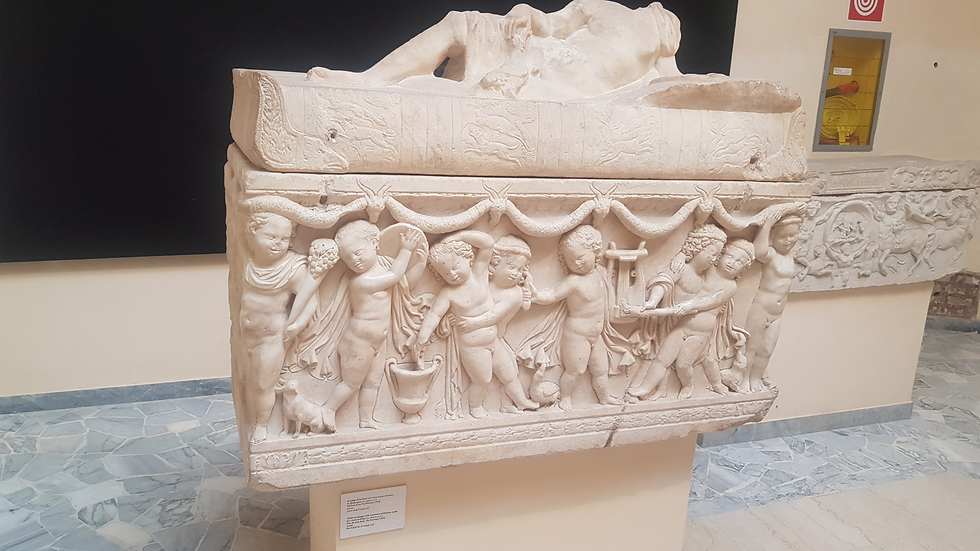Veni Vidi Vici - Roaming in Rome : Tuesday, 24 December 2019
- beehelm0410
- Dec 28, 2022
- 2 min read
Roaming in Rome goes to Ostia Antica


Christmas Eve – Tuesday, 24 December 2019 – a bright sunny and beautiful winter’s morning (winter officially started in Rome on 21 December 2019) we headed on the metro from CIPRO to Termini Stazione (the massive train station in Rome), changed metros to another line to travel to Piramide Station where we boarded the regional train to Ostia and enjoyed a short walk up and over a pedestrian bridge to Ostia Antica (this entire day’s outing was courtesy of a financial gift from Morgan – grazie bene!)
Ostia Antica is a large archaeological site. It is close to the modern town of Ostia, the location of the harbour city of ancient Rome, situated 15 miles (25 kilometres) southwest of Rome. "Ostia" (plural of "ostium") is a derivation of "os", which is the Latin word for "mouth". At the mouth of the River Tiber, Ostia was Rome's seaport, due to silting the site now lies 3 kilometres (2 miles) from the sea. The site is a great tourist attraction because of its excellent preservation of its ancient buildings, magnificent frescoes and impressive mosaics.
Ostia may well have been Rome's first colonia. Ancus Marcius, the semi-legendary fourth king of Rome, who was the first to destroy Ficana, an ancient town which was only 17 km (11 miles) from Rome and had a small harbour on the Tiber, according to legend then proceeded with the establishment of a new colony 10 km (6 miles) further west and closer to the sea coast. An inscription possibly confirms the establishment of the old castrum of Ostia in the 7th century BC. The oldest archaeological remains discovered, so far, date back to only the 4th century BC. The most ancient buildings currently visible, are from the 3rd century BC, for example, the Castrum (military camp); and from a slightly later date is the Capitolium (temple of Jupiter, Juno and Minerva). The opus quadratum of the walls of the original castrum at Ostia provide important evidence of the building techniques employed in Roman urbanisation during the period of the Middle Republic.































The café, gift shop and ablution facilities are home to a number of cats – they were all camera shy including this one, camera shy despite having its siesta!




The Museum at Ostia Antica, free entrance and a quaint treasure trove of art and artefacts museum at Ostia Antica, free entrance and a quaint treasure trove of art and artefacts





















Our expedition to Ostia Antica was incredible; it ended on a worrying and anxious note for us when we got news that Tristan had gone missing in Johannesburg, South Africa so we headed home to Domus Getsemani to access constant access to the wifi and hopefully positive updates about Tristan and his whereabouts. Our plans for Christmas Eve and attending Midnight Mass in Piazza San Pietro (St Peter's Square) were ditched and a sleepless, anxious, worrying and desperate Christmas Eve night was endured. Thankfully Tristan was found as the sun rose on Christmas morning.





Comments